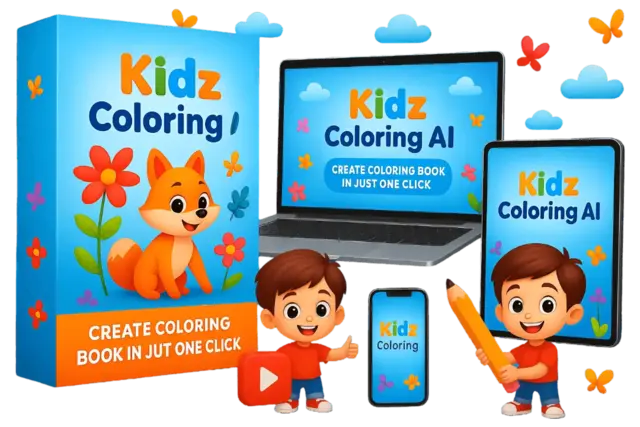Over 80% of companies now use affiliate programs to grow their business. That’s right—affiliate marketing is booming, and if you're not in the game yet, you're missing out on a serious opportunity. But here’s the thing: it’s not just about throwing a few links on a website and hoping for the best. There’s a method, a strategy, and most importantly—a way to turn this into a real income stream. I’m here to show you how.
What Is Affiliate Marketing (and Why Should You Care)?
In simple terms, affiliate marketing is about promoting products or services and earning a commission for every sale made through your referral. It’s like being a matchmaker between a customer and a product, but you get paid for making the introduction.
Why should you care? Because it’s one of the easiest ways to start generating passive income with little to no upfront costs. You don’t need your own product. You don’t need to worry about inventory or customer service. You just need to connect people with what they’re already looking for.
Step 1: Choose Your Niche
First things first: what are you passionate about? Affiliate marketing works best when you’re genuinely interested in what you’re promoting. Why? Because authenticity shines through. Whether it’s fitness gear, tech gadgets, or eco-friendly home products, your enthusiasm will help build trust with your audience.
But don’t stop there—do some research. Find a niche that not only excites you but also has a hungry audience. Look for areas where there’s high demand but not overwhelming competition.
Step 2: Find Affiliate Programs
Here’s where the rubber meets the road. Once you’ve nailed down your niche, it’s time to find affiliate programs that align with your topic. Some top programs for beginners include:
- Amazon Associates: It’s huge, simple, and trusted. With millions of products, it’s a great way to get your feet wet.
- ShareASale: This network has thousands of affiliate programs in various niches, from fashion to financial services.
- CJ Affiliate (formerly Commission Junction): A powerhouse with big-name brands.
- ClickBank: Great for digital products like e-books and courses. The commissions are often higher here.
Pro tip: Don’t chase high commissions right away. Focus on promoting products you believe in. It’s easier to sell what you love.
Step 3: Build Your Platform
Affiliate marketing needs a place to live—whether that’s a blog, YouTube channel, podcast, or social media platform. Think of this as your home base where you’ll share valuable content and promote your affiliate products.
Website: If you're serious, having a blog is crucial. It’s the one platform you have full control over. WordPress is a great place to start, and you can find themes and plugins tailored for affiliate marketing.
YouTube: Video content is powerful. Product reviews, how-to tutorials, and unboxings are incredibly effective in promoting affiliate links.
Social Media: Instagram, TikTok, and even Pinterest can drive tons of traffic to your affiliate offers. Just be mindful of the platform's rules regarding affiliate links.
Step 4: Create Killer Content
Now comes the fun part—creating content. But it’s not just about pumping out blog posts or videos. Your content needs to educate, entertain, or solve a problem. Think product reviews, “best of” lists, how-tos, and comparison guides. The goal is to position yourself as a trusted source.
Let’s be real: nobody wants to feel like they’re being sold to. Instead, focus on providing real value. Answer questions, offer honest opinions, and build trust. The sales will follow.
Step 5: Drive Traffic
No traffic, no sales. Simple as that. You need people to see your content and click on your affiliate links. Here’s how to get traffic without spending a fortune:
- Search Engine Optimization (SEO): Optimize your blog or YouTube videos for keywords your target audience is searching for. This is a long game, but it pays off big.
- Social Media: Use platforms like Instagram and Pinterest to share your content. Social proof is powerful—if people see your content being shared and liked, they’re more likely to check it out.
- Email Marketing: Build an email list from day one. Send regular newsletters with tips, advice, and your latest product recommendations.
- Paid Ads: This is optional for beginners, but platforms like Facebook and Google Ads can help boost traffic to your content faster.
Step 6: Analyze and Optimize
One of the most overlooked aspects of affiliate marketing is tracking and optimizing. You need to know which links are performing, where your traffic is coming from, and what’s converting. Most affiliate programs provide tracking tools, but you can also use Google Analytics to monitor your performance.
If something isn’t working, tweak it. Experiment with different headlines, call-to-actions, and content formats. Optimization is key to scaling your affiliate business.
Ready to Get Started?
Affiliate marketing for beginners doesn’t have to be complicated. It’s about starting with the right foundation, staying consistent, and optimizing as you go. Don’t expect overnight success, but if you put in the work, the rewards are real—and scalable.
So, what are you waiting for? Dive in, test the waters, and see how affiliate marketing can start generating income for you today!








